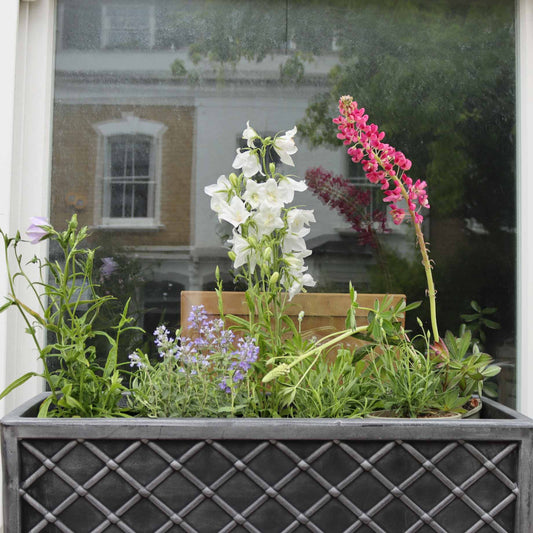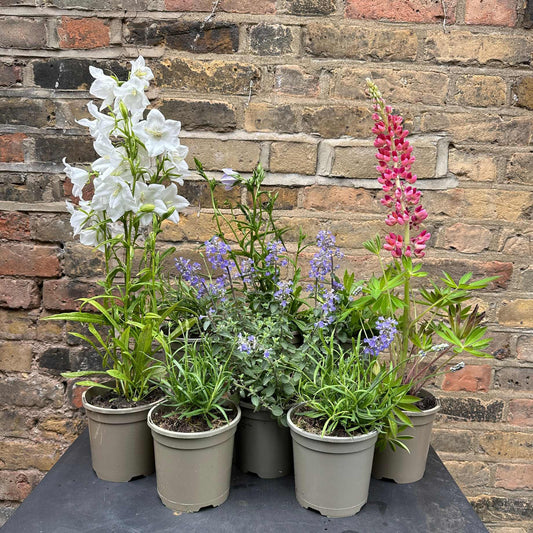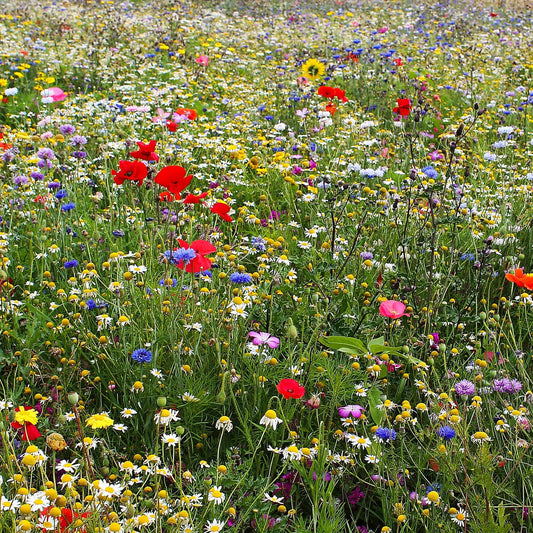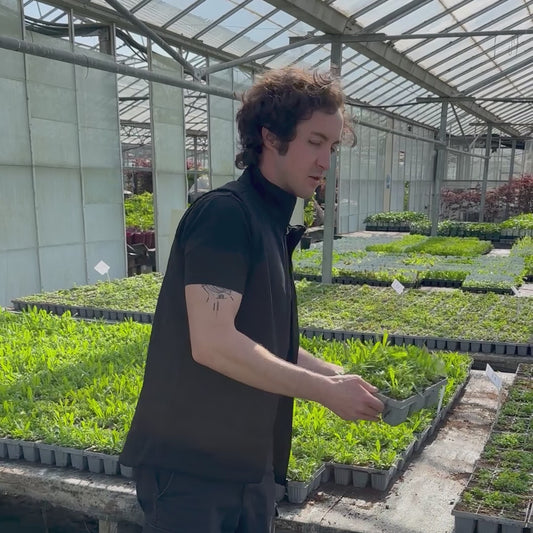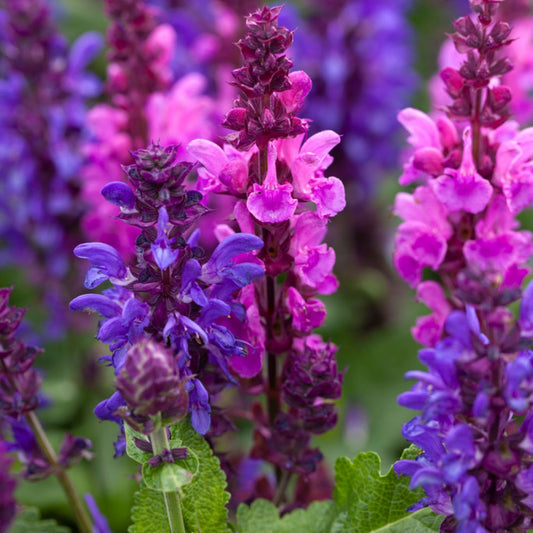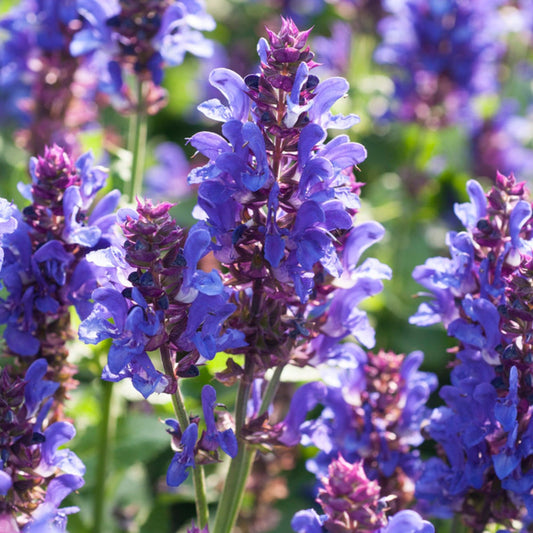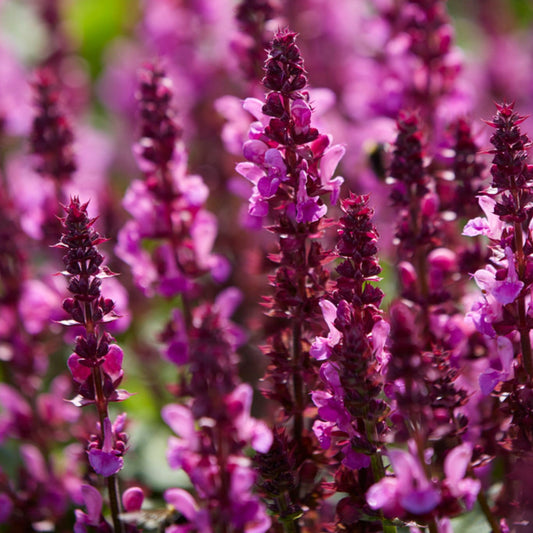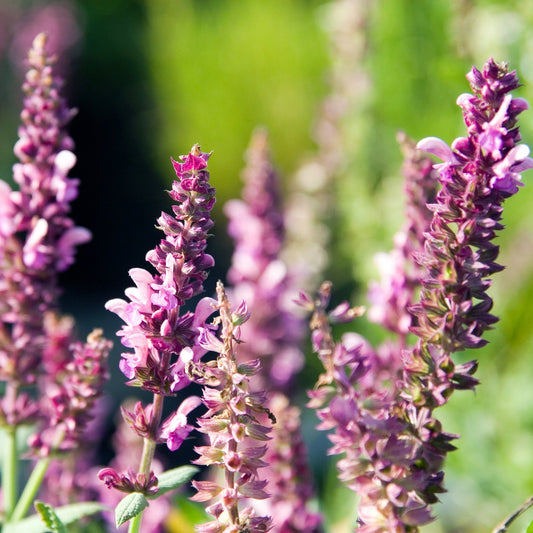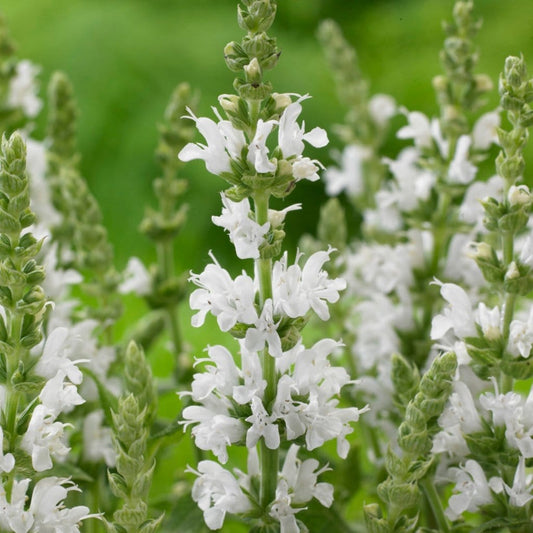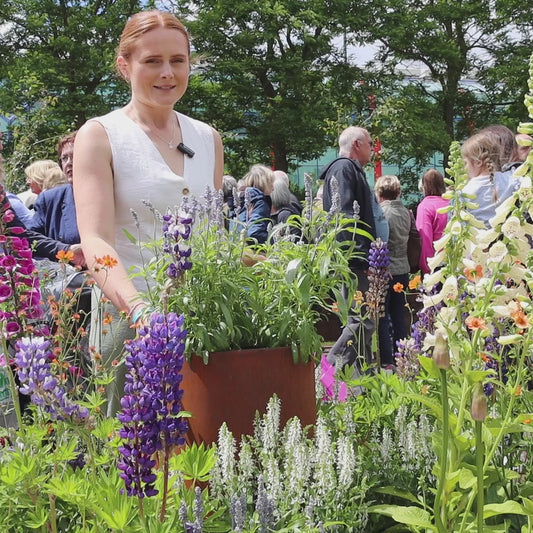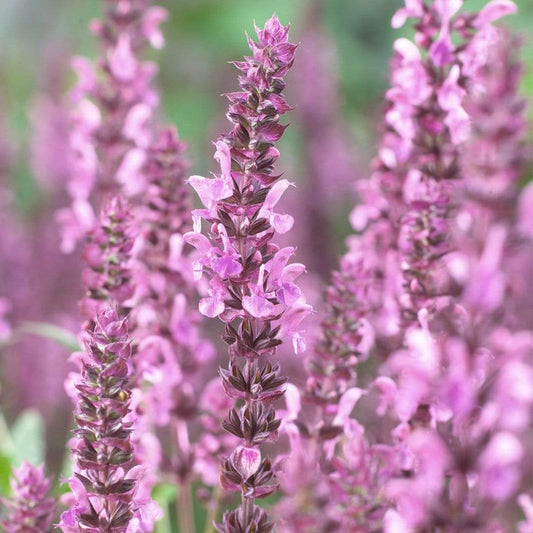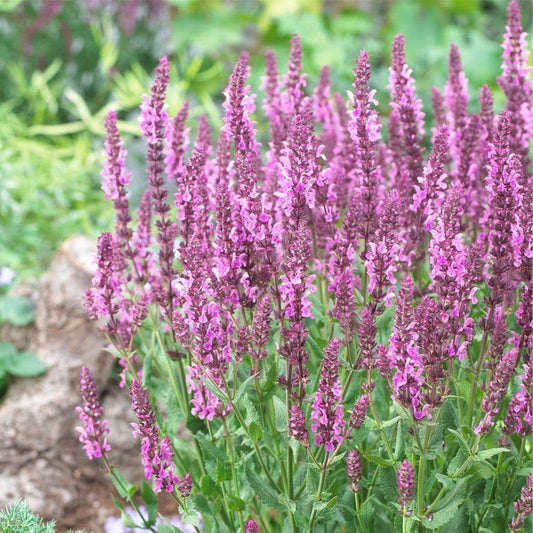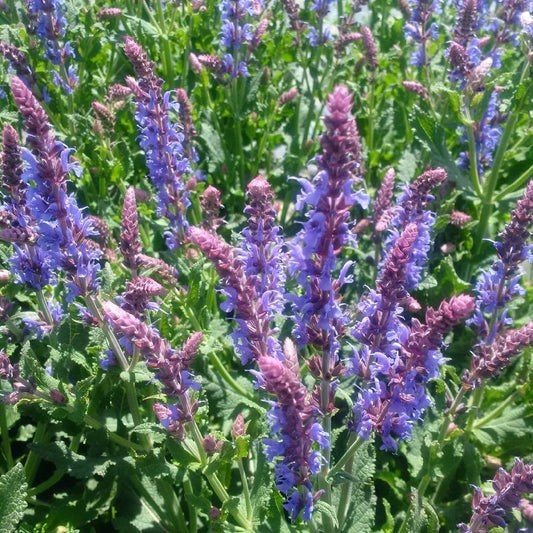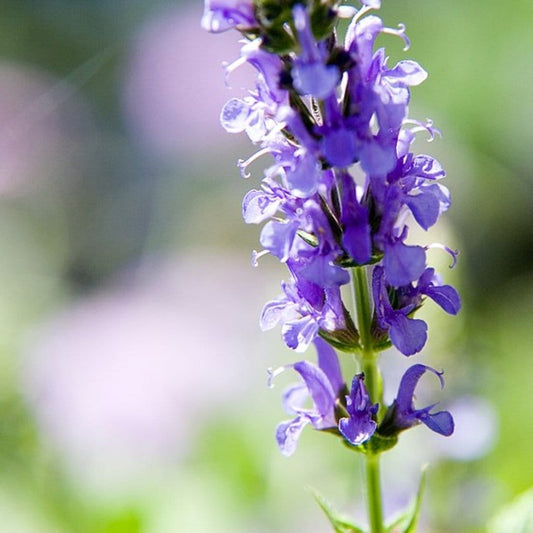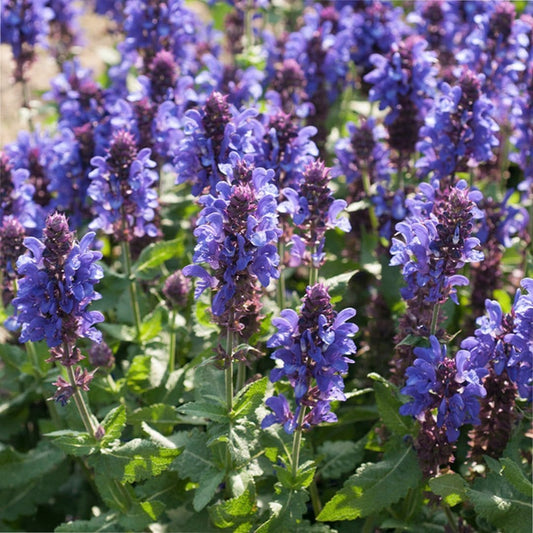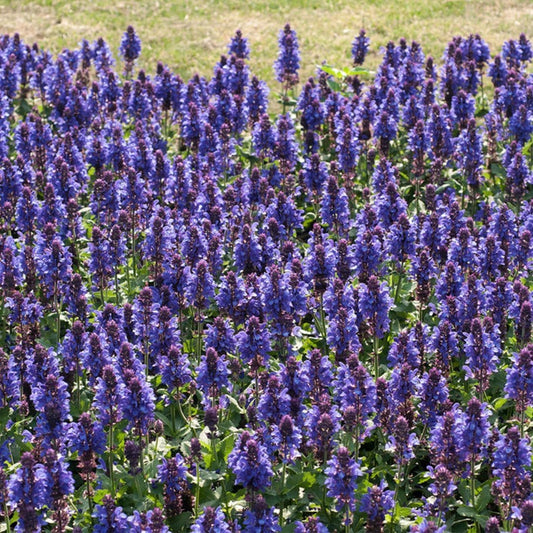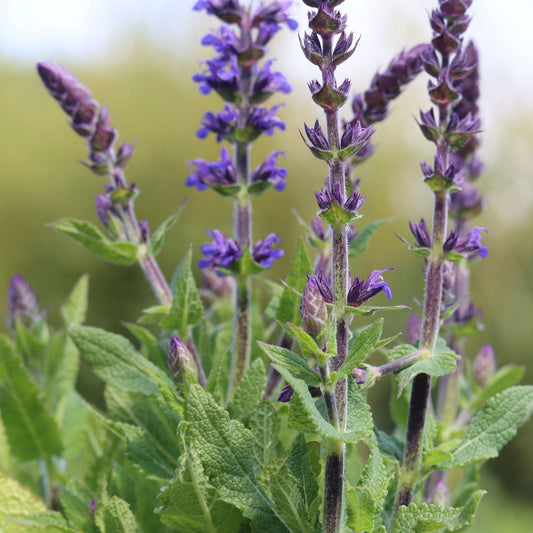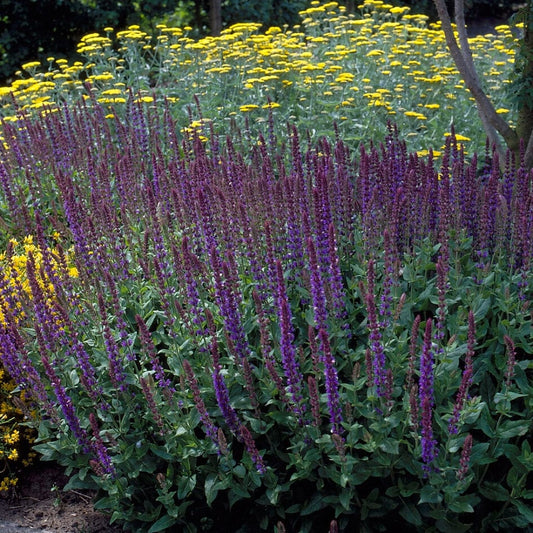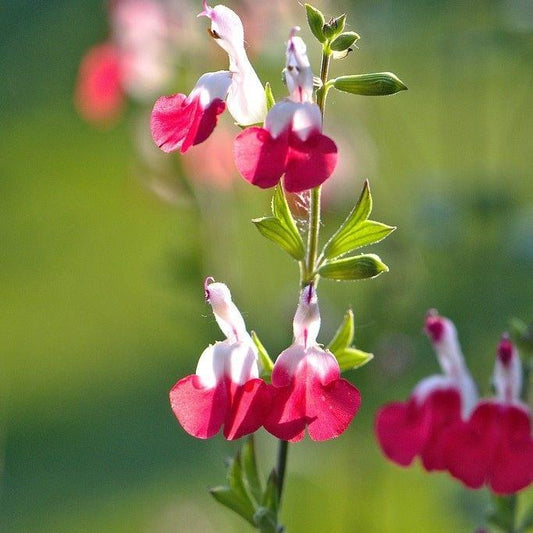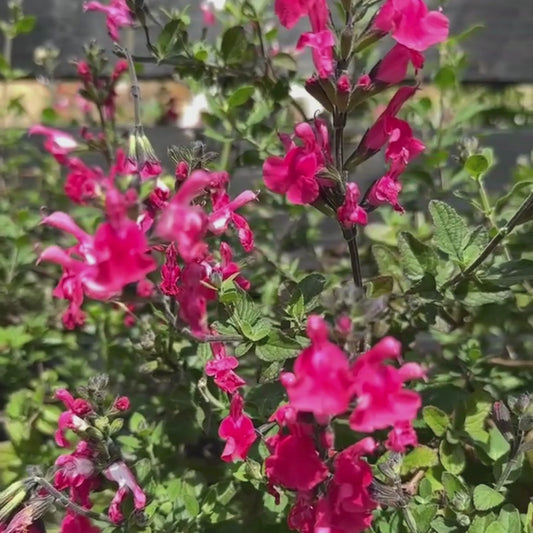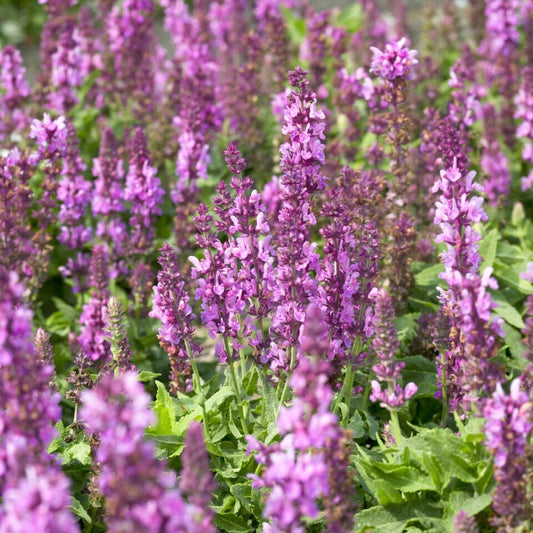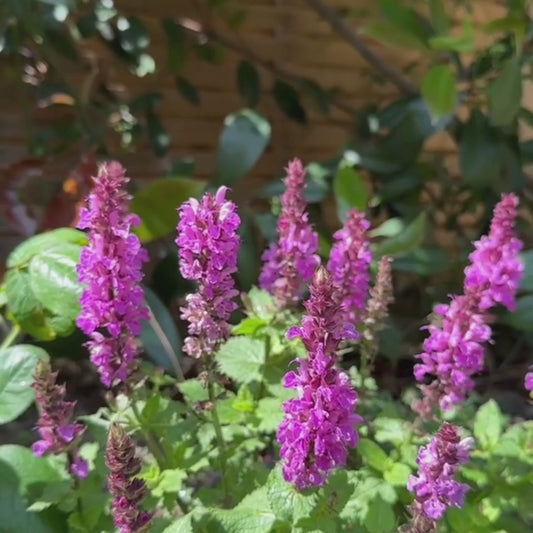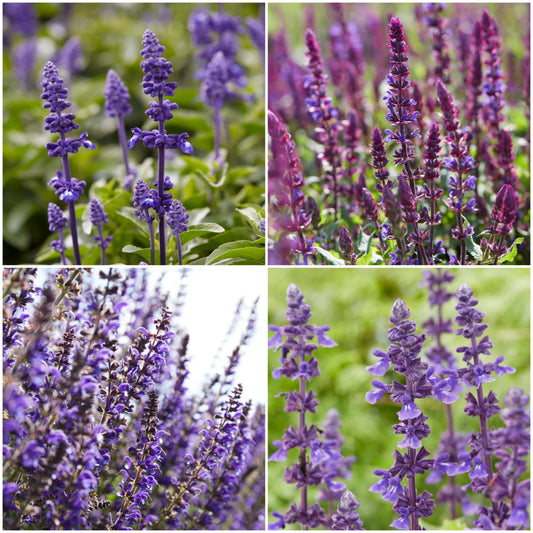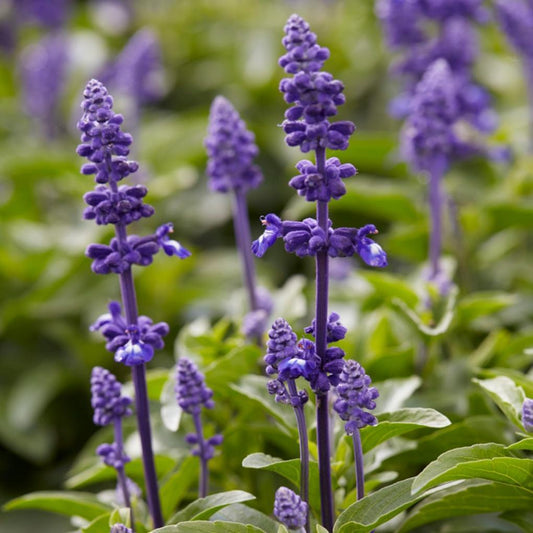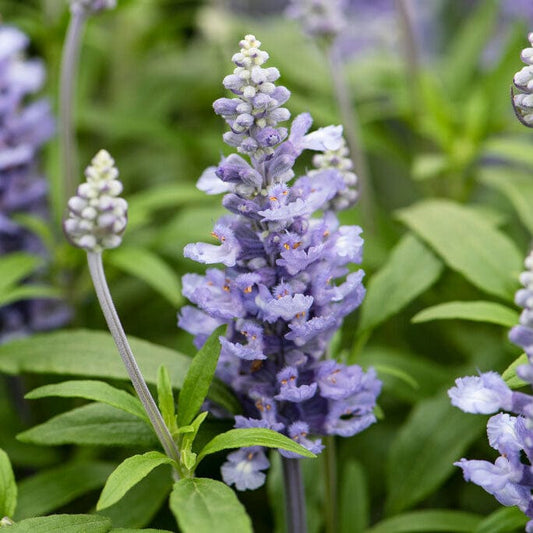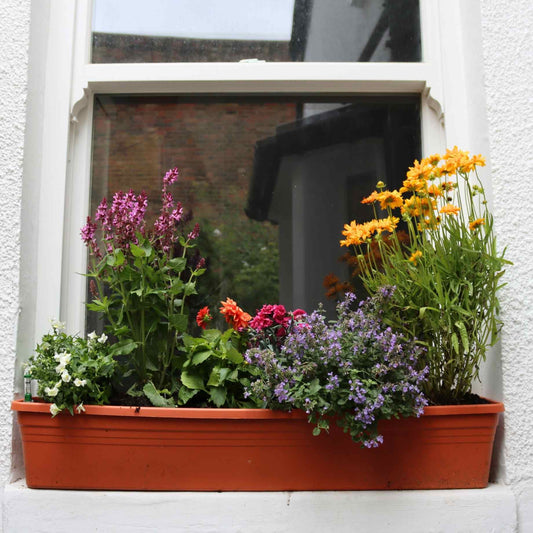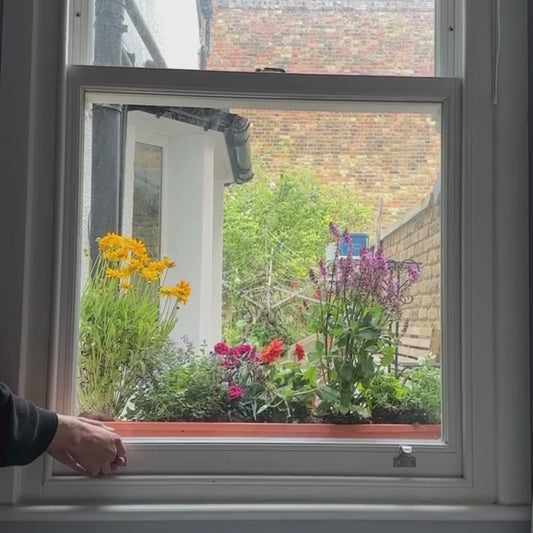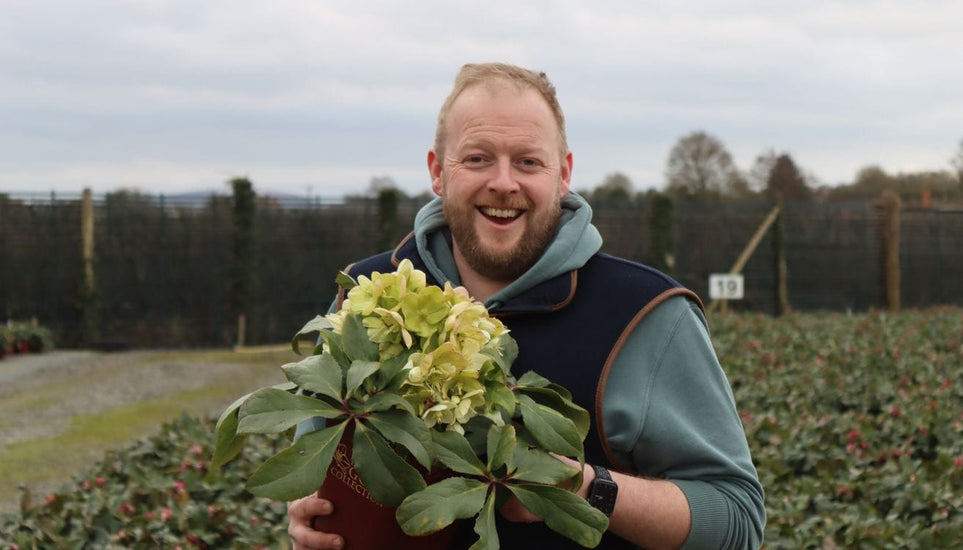Collection: Salvia Plants
The contrast between their vibrant flowers and dark, fragrant foliage make salvias the perfect plants to decorate your borders! As you can probably tell from our collection, our growers love salvia and are always looking out for the latest varieties to add to the nursery. These slender perennials flourish in full sunlight, and are a firm favourite of bees and other valuable pollinators. Typically growing up to around 50cm, they’re perfectly sized for the front of a border, underplanting trees or showcasing in pots.
Need help picking?-
Regular price From £21Regular price
£24Sale price From £21Contemporary Window Box Collection
Modernise your window box game
- Features trendy perennials (eg. dahlia)
- Easily fill a window-sized planter
- Bloom times vary depending on selection
- Refreshes your home's facade
1 option available
-
Regular price From £50Regular price Sale price From £50
Bee & Butterfly Friendly Wildflower Meadow Plants
Bring all the pollinators!
- Grows best in full sun (tolerates part shade)
- Transform your lawn, beds and borders
- Flowers from May to October
- Highly attractive to pollinating insects
Currently out of stock
-
Regular price From £16Regular price
£18Sale price From £16Salvia 'Blue Marvel'
An award winning Salvia with massive blooms
- Uniquely large violet purple flower spikes
- Flowers all summer long and into Autumn!
- Hardy and very easy to grow and care for
- Buy an almost mature plant ready to bloom!
Currently out of stock
-
Regular price From £15Regular price
£18Sale price From £15Salvia 'Rose Marvel'
Rose towers of bloom from Spring to Autumn
- Large, vibrant magenta pink flowers all summer
- Flowers from May to October!
- Hardy and very easy to grow and care for
- Compact, neat growth of dark green foliage
Currently out of stock
-
Regular price From £16Regular price
£18Sale price From £16Salvia 'Lyrical White'
This season's must-have, in White
- Clusters of Cotton White flowers on upright spires
- Flowers from June to October
- Stunning as a feature in pots
- Adds height to a Cottage Garden border
Currently out of stock
-
Regular price From £15Regular price
£18Sale price From £15Salvia 'Fashionista Pretty in Pink'
Make your garden pretty in pink
- Beautiful and vibrant magenta pink flower spikes
- Dark green provides excellent ground cover
- Flowers all summer long and into Autumn!
- Hardy and very easy to grow and care for
Currently out of stock
-
Regular price From £15Regular price Sale price From £15
Salvia 'Blue Hill'
Delicate Lavender Blue, adored by bees
- Lavender blue flowers rising from emerald green foliage
- Flowers from June to October
- Stunning as a feature in pots
- Perfect for the front of a border
Currently out of stock
-
Regular price From £15Regular price
£18Sale price From £15Salvia 'Fashionista Midnight Model'
Purples as dark as the midnight Milky Way
- Profusions of rich violet purple flowers
- Flowers from Late Spring through Summer
- Create a cottage garden aesthetic
- Hardy Perennial–will come back year after year
Currently out of stock
-
Regular price From £8Regular price Sale price From £8
Salvia 'Merleau Blue'
Compact salvia in classic colours
- Small purple blue flowers on slender stems
- Summer flowering from July to October
- Adds scent and colour to a sunny border
- RHS Plants for Pollinators
Currently out of stock
-
Regular price From £16Regular price
£18Sale price From £16Salvia 'Hot Lips'
Summer-long displays of red and white
- Two-toned white and candy-apple red flowers on tall stems
- Flowers from July right through to October
- Compact and colourful for the front of a border
- Fragrant foliage
Currently out of stock
-
Regular price From £8Regular price Sale price From £8
Salvia 'Merleau Rose'
A cottage garden essential!
- Rose pink flowers clustered on compact, upright stems above fragrant foliage
- Long flowering season from July to October
- Compact variety that's perfect for pots or front borders
- RHS Plants for Pollinators
Currently out of stock
-
Regular price £45Regular price
£48Sale price £45Spectacular Salvia Collection
Bright, compact and fragrant
- Includes sage plants in a range of hues
- Pairs beautifully planted alongside roses
- Flowers from June to October
- RHS Plants for Pollinators
Currently out of stock
-
Regular price From £8Regular price Sale price From £8
Salvia 'Farina Silver Blue'
Unique silver-blue colour all summer long
- Compact spikes packed with light silvery-blue flowers
- Flowers all summer
- Silver-grey aromatic foliage
- RHS Plants for Pollinators
Currently out of stock
-
Regular price From £21Regular price
£24Sale price From £21Classic Window Box Collection
Create an iconic window display
- Includes perennial fan favourites (eg. lupin)
- Position in full sun on an outside sill
- Bloom times vary depending on selection
- An easy way to attract pollinators
Currently out of stock
Hereford
Meet Jack
Perennials born in Herefordshire, blooming in your garden
Our perennials start life in the rolling Herefordshire hills, where Jack and his team trial over 250 new varieties each year to bring you the best performing and most sustainable plants in the UK. With over forty years of excellence, it’s no surprise that they’ve won the HTA Plant Grower of the Year award two years running.
Need help picking?

Which salvia?
Not to be confused with the short lived annual salvias, ours are all perennials which will come back year after year. They come in so many different colours that there’s bound to be one to fit your scheme, from the soft pastels of Merleau Rose, Blue Hill and refreshing Lyrical White to the bold red and white bicolour of Hot Lips or the deep purples, blues and magentas of the Fashionista series. Mix them up or stick to a single colour, they’re all compact enough for borders, beds or pots.

Planting schemes and partners
Salvias are a versatile and colourful addition to a wildlife friendly garden, pairing well with meadow plants and grasses, as well as flowers in similar shades such as lavender, penstemon and foxgloves. Plant them in pots, in the front of sunny borders or dotted throughout your mixed border as vertical accents. Why not plant some near your vegetable plot or fruit plants, to attract bees and boost your crops? It’s said that planting salvia with roses will help to keep mildew and black spot at bay. As a relative of herb sage, salvias have beautifully scented foliage, so they make a good addition to a scented garden too.

Growing tips
Salvias like lots of sun, so they should be planted in the brightest and warmest spot in your garden. Moist, well draining soil is a must, and you’ll be glad to know that they become drought resistant once they’re established in the ground, usually after about a year. Until this point, water them regularly until autumn, and deadhead faded flowers to keep them blooming for longer. It’s a good idea to take cuttings from your salvia plants at the end of summer and to mulch around your plants in autumn to protect against any damage caused by a very wet and cold winter.
Salvia FAQs
Where should I plant salvia?
Salvia plants prefer well drained soil and a position in full sunlight (6-8 hours per day in spring and summer) although they will also grow in partial shade.
When is the best time to plant salvia?
The best time to plant salvia is in the spring, after the last frost has passed in your area. This allows the plants the chance to establish themselves before the hot summer months.
How often should I water salvia plants?
Salvia plants prefer slightly dry conditions, so be careful not to overwater them. Water them deeply a couple of times a week rather than often, and increase this in very hot and dry weather.
Do salvia plants need fertilising?
Salvia plants get along just fine without feeding. You can apply a little slow release fertiliser in the spring to promote healthy growth, but avoid overfeeding as this can cause leggy growth rather than flowers.
How do I propagate salvia plants?
Salvia plants can be propagated from seeds, cuttings, or by division. Seeds are simplest - just collect them when the plants have finished flowering or allow them to self seed. Taking softwood cuttings in the spring or semi hardwood cuttings in the summer is probably the most reliable method. Cut about 15-20cm of stem, remove the lower leaves and dip them in rootgrow before potting up. Division can be done after a few years, by digging up the plant clump, splitting it into several smaller sections and replanting them elsewhere.
Happy plants make happy customers
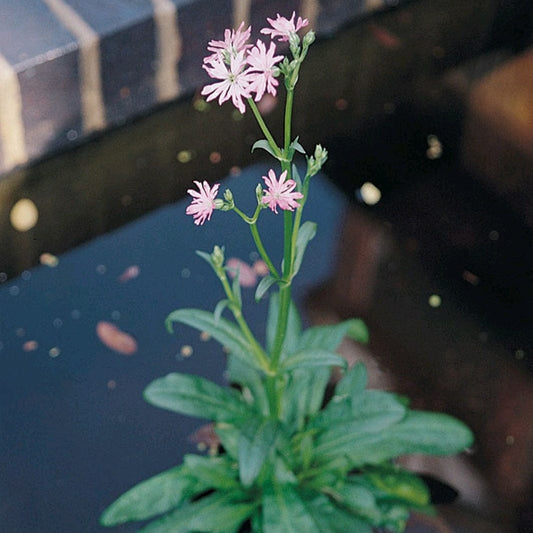
Plants arrived in great condition and very promptly. Well established - much better than the ones I got at my local garden centre.
Monica Spence
| 24 May
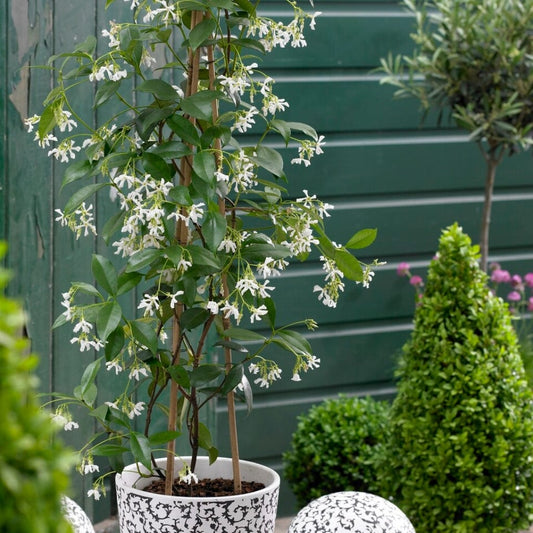
Yet again this company delivered good healthy plants, exactly as shown in photos, well packaged and within delivery time quoted. Recommend!
Jacqueline Burgess
| 2 Jun
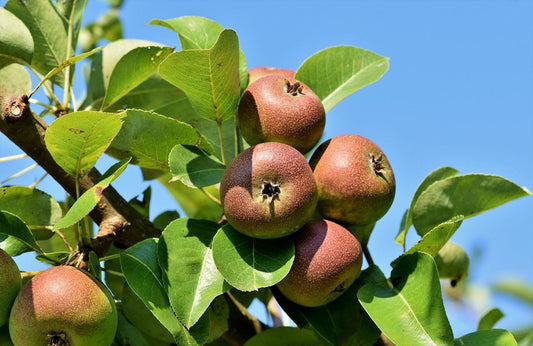
I continue to be so impressed with Roots. Their customer care, knowledge of their subject: from planting hedges to pruning roses and more, has been a great support.
Judy Lane
| 23 Oct
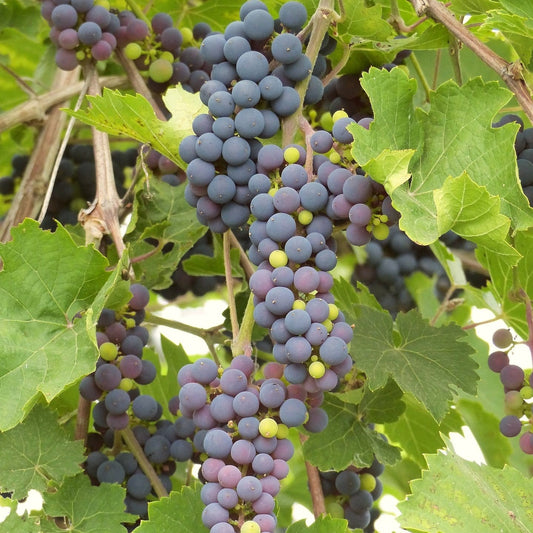
The plant arrived looking vigorously healthy, which brings a smile to your face, extremely well protected in its packaging.
Martyn Hill
| 5 Jul
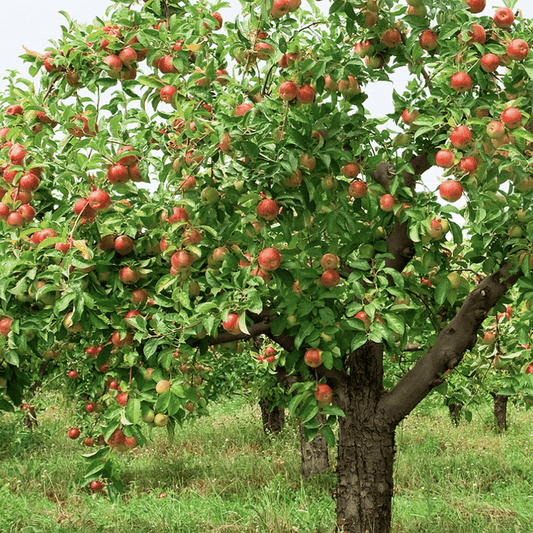
As a non-gardener, I found my whole experience brilliant. Great information & advice available on the website, great range of products & prices are brilliant.
John-Paul
| 22 May

Wonderful plants and great customer service... really surprised to find that the plants are better than those you would get at your local garden centre.
Gavin Wilcock
| 8 Nov
Fighting plastic waste
Delivering fresh from the nursery
Supporting UK growers

